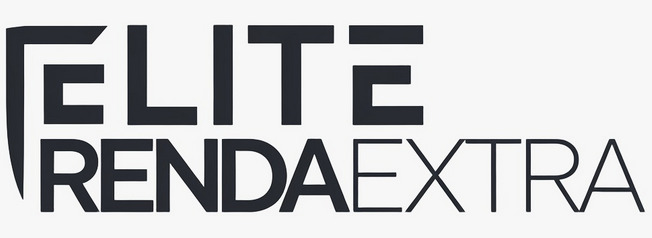Embarking on the journey to secure a personal loan can often feel like navigating a complex maze. Whether it’s for consolidating debt, financing a significant purchase, or covering unexpected expenses, understanding the prerequisites is the first crucial step. This awareness not only demystifies the process but also empowers you to approach potential lenders with greater confidence and preparedness.
Knowing what lenders typically look for can significantly streamline your application experience. It allows you to assess your own financial standing, gather necessary documentation in advance, and identify areas you might need to improve. This proactive approach can make the difference between a smooth approval and a frustrating setback, setting a solid foundation for your financial endeavors.
Understanding the Basics of Personal Loan Qualification
When you apply for a personal loan, lenders are essentially evaluating the risk associated with lending you money. Their primary concern is your ability to repay the loan according to the agreed-upon terms. To make this assessment, they look at a variety of factors that paint a picture of your financial health and reliability. While specific requirements can vary from one financial institution to another, there are common threads that run through most application processes.
Personal loans are often unsecured, meaning they don’t require collateral like a house or car. This lack of security for the lender typically means that criteria related to your personal financial stability, such as income and credit history, become even more critical. A strong application demonstrates to the lender that you are a responsible borrower with a low risk of default, making them more comfortable extending credit to you.
Key Factors Lenders Consider for Personal Loans
Lenders meticulously review several key areas of your financial profile. Each piece of information helps them build a comprehensive understanding of your creditworthiness. Being aware of these elements allows you to anticipate what will be scrutinized.
Your Credit Score and History
Your credit score is often one of the first things a lender will check. This three-digit number, typically ranging from 300 to 850, serves as a snapshot of your credit risk. A higher score generally indicates better credit health and can lead to more favorable loan terms, including lower interest rates. Lenders use it to predict the likelihood that you will repay your debts on time.
Beyond the score itself, your credit history provides detailed insights. This includes:
- Payment History: A consistent record of on-time payments is highly valued. Late payments, defaults, or bankruptcies can negatively impact your eligibility.
- Amounts Owed: This looks at your total debt and your credit utilization ratio – how much credit you’re using compared to your total available credit. Lower utilization is generally better.
- Length of Credit History: A longer history of responsible credit management can be beneficial.
- New Credit: Opening many new credit accounts in a short period can sometimes be viewed as a risk.
- Credit Mix: Having a mix of different types of credit (e.g., credit cards, installment loans) can be positive, provided they are managed well.
Lenders usually have minimum credit score requirements, though these can differ. It’s advisable to check your credit report before applying to ensure its accuracy and to understand where you stand.
Income and Employment Stability
Your income and employment status are critical indicators of your ability to make regular loan payments. Lenders want to see a stable and sufficient income source. They will typically ask for proof of income, which could include recent pay stubs, W-2 forms, tax returns, or bank statements, especially if you are self-employed or have variable income.
Employment stability is also a factor. Lenders may prefer applicants who have been with their current employer for a certain period, as this suggests a steady income stream. Frequent job changes or periods of unemployment might raise concerns, though a strong overall financial profile can sometimes mitigate these.
Debt-to-Income Ratio (DTI)
Your debt-to-income ratio (DTI) is a percentage that compares your total monthly debt payments (including mortgages, auto loans, credit card minimum payments, and the proposed new personal loan payment) to your gross monthly income. For example, if your monthly debt payments are $2,000 and your gross monthly income is $6,000, your DTI is 33%.
Lenders use DTI to gauge your capacity to manage additional monthly payments. A lower DTI suggests that you have a good balance between debt and income, making you a less risky borrower. While acceptable DTI levels vary, many lenders prefer a DTI below 43%, with some having even stricter limits, especially for unsecured loans. Calculating your DTI before applying can help you understand your borrowing capacity.
Loan Amount and Purpose
The amount of money you wish to borrow and the intended use of the funds can sometimes influence a lender’s decision. While personal loans are versatile and can be used for many purposes (e.g., debt consolidation, home improvements, medical bills, large purchases), some lenders might have restrictions or may inquire about the purpose to assess risk or ensure compliance with their lending policies.
Larger loan amounts might come with more stringent qualification criteria, as the lender is taking on a greater risk. It’s important to borrow only what you need and can comfortably repay. Demonstrating a clear and responsible purpose for the loan can sometimes strengthen your application.
Age and Residency Requirements
To enter into a loan agreement, you generally must be of legal age to contract in your jurisdiction, which is typically 18 or 21 years old, depending on local laws. Lenders will also require you to be a citizen or permanent resident of the country where you are applying, or hold a valid long-term visa. You’ll likely need to provide proof of identity and residency.
The Importance of Documentation
Gathering the necessary paperwork is a vital part of the personal loan application process. Lenders require documentation to verify the information you provide and to comply with regulatory requirements. Having these documents ready can expedite your application.
Commonly Required Documents
While the specific list can vary, common documents include:
- Proof of Identity: Government-issued photo ID such as a driver’s license, passport, or state ID.
- Proof of Address: Utility bills, lease agreement, or mortgage statement in your name showing your current address.
- Proof of Income: Recent pay stubs, W-2 forms, 1099 forms (for self-employed individuals), tax returns, or bank statements showing regular deposits.
- Social Security Number (or equivalent national identifier): For credit checks and identity verification.
- Bank Account Information: For disbursing the loan funds and potentially for setting up automatic payments.
- Employment Verification: Lenders may contact your employer to confirm your employment status and income.
Being organized and providing accurate, complete documentation can significantly smooth the path to loan consideration.
What if You Don’t Meet All Requirements?
Discovering that you may not meet all the standard requirements for a personal loan can be disheartening, but it doesn’t necessarily mean you’re out of options. There are often steps you can take to improve your eligibility or alternative paths to consider.
Improving Your Chances
If your application isn’t as strong as you’d like, consider focusing on these areas:
- Improve Your Credit Score: Review your credit report for errors and dispute any inaccuracies. Focus on making all payments on time and try to pay down existing credit card balances to lower your credit utilization ratio.
- Reduce Your Debt-to-Income Ratio: Actively work on paying down existing debts. You might also explore ways to increase your income, if feasible.
- Demonstrate Income Stability: If your income is variable, meticulous record-keeping and longer-term income history can be beneficial.
- Consider a Smaller Loan Amount: Requesting a more modest loan amount that aligns better with your current financial capacity might increase your chances of approval.
- Explore a Co-signer Option: If permissible by the lender, applying with a co-signer who has a strong credit profile and stable income could improve your application’s strength. However, this is a significant commitment for the co-signer, as they become legally responsible for the debt if you fail to pay.
Considering Alternatives
If a traditional personal loan isn’t immediately accessible, other financial avenues might be worth exploring, depending on your needs and circumstances. Some individuals look into options like secured loans (if collateral is available), lines of credit, or specialized lending programs. It’s important to thoroughly understand the terms and conditions of any financial product before committing.
Preparing Your Application: A Step-by-Step Overview
A methodical approach to your personal loan application can make the process less daunting and more efficient. Understanding the typical steps involved helps you prepare adequately.
Self-Assessment
Before formally applying, take time to evaluate your financial situation. Check your credit score and report. Calculate your debt-to-income ratio. Understand how much you can realistically afford to borrow and repay each month without straining your budget.
Gathering Documents
Compile all the necessary documentation mentioned earlier. Having these ready in digital or physical form will save you time once you begin the application process. Ensure all information is current and accurate.
Comparing Lenders
Different lenders have varying requirements, interest rates, fees, and loan terms. It’s beneficial to be aware that exploring various financial institutions, including banks, credit unions, and online lenders, can provide a broader perspective on available options. Pay attention to Annual Percentage Rates (APRs), repayment periods, and any associated fees.
Understanding Loan Terms
Before accepting any loan offer, carefully review all the terms and conditions. Ensure you understand the interest rate (fixed or variable), the total cost of the loan (including any origination fees or other charges), the monthly payment amount, and the loan duration. Clarity on these points is essential for responsible borrowing.
Navigating personal loan requirements effectively hinges on preparation and understanding. By familiarizing yourself with what lenders look for, assessing your own financial standing, and diligently preparing your documentation, you position yourself more favorably. This knowledge not only aids in the application process itself but also contributes to making informed financial decisions that align with your long-term goals. Being well-informed is a powerful asset in any financial undertaking.



